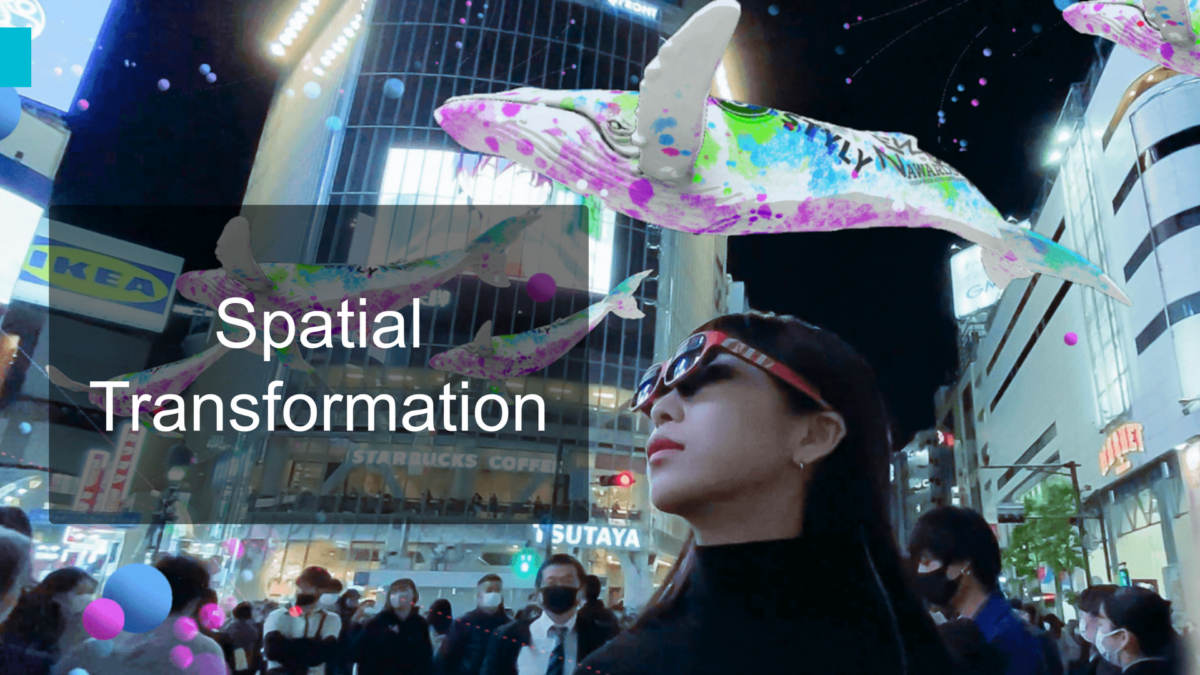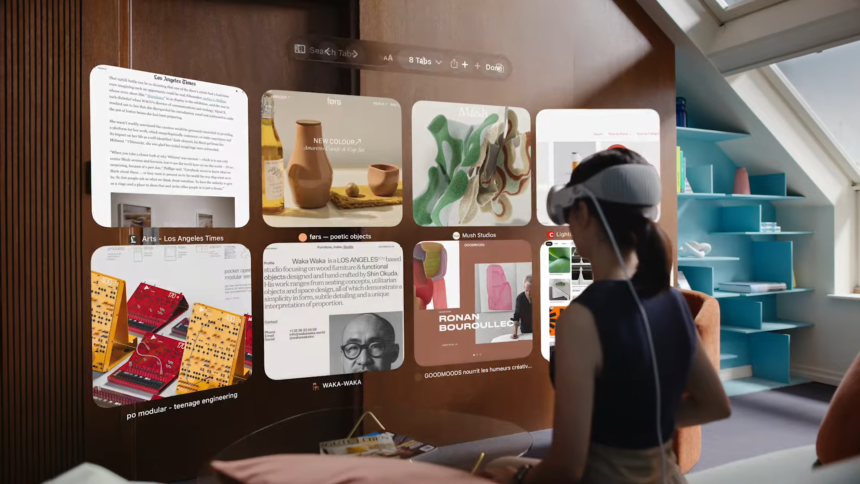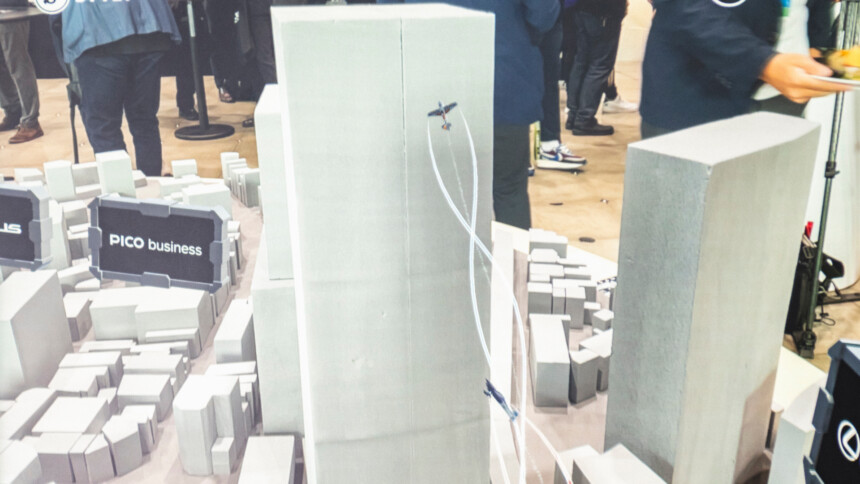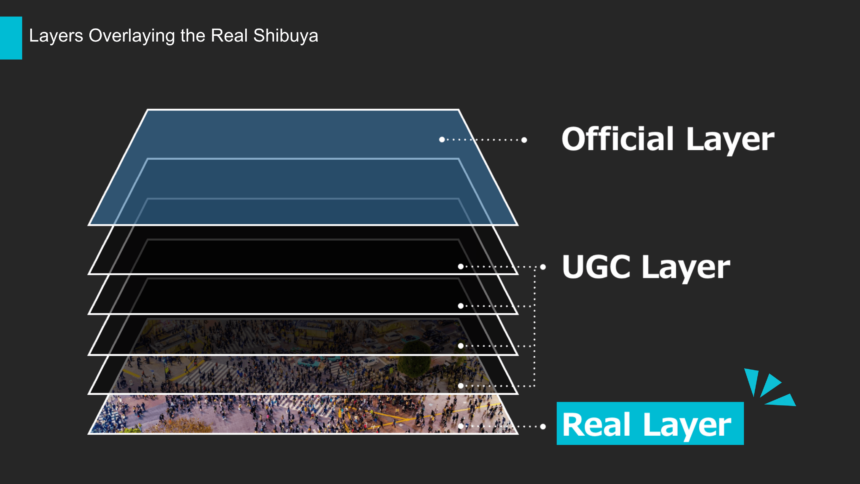Cities XR: A Japanese Vision for the Digital Transformation of Public Spaces

XR studio Psychic VR Lab from Japan has a clear vision for the age of augmented reality. What will this metaverse look like? I took a close look at an early demo in Tokyo.
Digital things in public spaces – that's something we don't see frequently in Germany and in Western countries in general. Digital displays in buses and trains are often conspicuous by their failure, or not noticed at all because they offer nothing interesting. The best you can hope for are a few scattered advertising screens showing news snippets in train stations.
Germans can't imagine anything like New York's Times Square in their country. Gigantic advertising screens at intersections, even with directional sound for waiting pedestrians? Serious riots seem inevitable.
Japan: Hold my beer!
This debate continues to rage in the XR niche. Shortly after the introduction of ads in the VR multiplayer shooter Blaston, VR fans went to the barricades, including the review bombing popular among the social media generation. Meta and Resolution Games backed down. But postponed is not cancelled: Meta still sees huge advertising potential in the AR market.
Can you blame them? The massive costs of developing immersive hardware and technologies will keep the Reality Labs division in the red for quite some time. Meanwhile, users want cheaper VR headsets and software, regardless of better and more expensive technology or quality.
Augmented reality: physical hurdles slowing metaverse future
But the technology's adoption won't be driven by advertising. Instead, it will be useful applications that are intuitive enough to at least partially replace the smartphone, and helpful enough that people without low vision will put AR headsets on. There are ideas and visions for this, ranging from navigation to all kinds of information, such as opening hours or timetables, and much more.
Developing the necessary hardware is an unresolved challenge for manufacturers around the world. In particular, physical limitations have prevented the creation of AR headsets that have a form factor suitable for everyday use, long battery life, a large field of view, and enough processing power to run 3D applications in real time.

Productivity via AR is one of the stated goals of the Apple Vision Pro. | Image: Apple
This was also Apple's stated goal, given that the Cupertino-based global corporation has never been a fan of virtual reality. But even Apple has had to concede defeat to physics: The Apple Vision Pro is a VR headset that relies on camera pass-through to make the vision of productive AR use in everyday life a reality.
Meta is also working hard on the first AR headset. A first version will reportedly be shown for demos in 2024. A stripped-down version for consumers is planned for 2027. This alone shows what a gigantic undertaking the development of such a new computing platform is.
AR content as a vehicle for visions of the Metaverse
When it comes to content, things look easier. Augmented reality is already available in various retail stores, Google search offers AR, and big-name studios like Niantic have been dabbling in AR for years, with mixed success.
Psychic VR Lab is a Japanese studio that has also been experimenting with VR and AR for several years, and Styly is their platform for user-generated XR content. This content can be viewed anywhere via the smartphone app. According to the studio, around 80,000 artists have now created more than 100,000 XR scenes. The Styly app has been downloaded well over five million times.
These are not bad figures, considering that AR can usually only be viewed through the small screen of a smartphone, and that interest in this technology is low, especially in western regions.
But the makers:inside are thinking beyond a semi-immersive asset library for smartphones. Their goal is to transform public space and overlay real-world environments with digital layers. A true metaverse enriches physical environments with digital experiences and information, according to the vision of the studio founded in 2016.
But Psychic is thinking beyond a semi-immersive asset library for smartphones. Their goal is to transform public space, overlaying real-world environments with digital levels. A true metaverse enriches physical environments with digital experiences and information, says the vision of the studio founded in 2016.
A quite impressive example of how sporting events can benefit from AR technology was recently shown by Psychic VR Lab with Air Race X. The “Formula 1 of the air”, discontinued by Red Bull in 2019, was revived with a new concept and with the help of AR.
The digital transformation of public spaces: Always On
After the rather disappointing development of the VR-centric Metaverse topic in recent years, Psychic VR Lab unsurprisingly believes that the age of augmented reality is upon us: Starting in 2025, the company expects significant growth in the technology and its applications. From 2030, the team around founder Masahiro Yamaguchi even forecasts a change in people's lifestyles: Digital user interfaces will be “always on” and updated in real time, and digital interactions with “smart cities” will be part of the way we live.
Sounds like science fiction? To prove it's heading in that direction, Psychic VR Labs is working on projects that anchor digital content in real-world locations, where it can be accessed either around events like the aforementioned Air Race X or at any time. At the famous Shibuya crossing on a rainy Sunday morning in October 2023, the team showed me what this could look like.
Using the Styly app, I watched a digital animé-style concert right there at the crossing, with the surroundings artistically integrated.
I've seen something similar before: On 18 December 2022, the band Gorillaz performed an AR concert at Piccadilly Circus in London, which was tuned to the location using Google's geospatial API. A little earlier, the band performed their new single 'Skinny Apes' in AR at New York's Times Square.
Something like this, in Psychic's vision of a future metaverse, would be the music layer I choose to experience the corresponding digital music content locally.
Cities XR: The strange digital palm tree atop a Shibuya Crossing skyscraper
In Psychic's vision, the layers of an AR-centric metaverse could include games, social networks or art. The studio demonstrated the latter at Shibuya Crossing. Two days earlier, I had attended a workshop at the studio and used the Styly editor to create a digital object – I picked a palm tree for some reason – on one of the skyscrapers at Shibuya Crossing.
The city's geospatial data, including all the buildings, is publicly available in Japan, so Styly can access and work with Tokyo's digital twin.

I was able to watch an AR demo race on a tabletop model of Shibuya via the Styly app on my smartphone. | Image: Styly
Sure enough, I can see my pulsating (!) palm tree, with animated foliage raining down from it, on the real building through the tablet or smartphone display. Okay, it's actually clipping through the giant billboard on the roof. But it's still cool that everyone can marvel at my palm tree creation here – and only here. If you ever visit Shibuya Crossing, download the Styly app, launch “A MIXED Palmtree” and see if you can find this weird thing.
Now, I'm not much of an art guy, as you can see from my creation. I'm more interested in things that are informative, like an official AR layer that allows you to get your bearings quickly, with information about administration, sights, and signposts. Or a layer where shops and restaurants show their opening hours and capacity. Is there enough room for me and my friends at the sushi bar on the right? Does the tech shop on the left have camera accessories?
Digital transformation: do you want it or not?
The possibilities are endless and would, in theory at least, make everyday life easier. If implemented properly, it would save us the time we would otherwise spend browsing on our smartphones. Provided, of course, that the operators' digital offerings allow for such efficiency in the first place.
While such visions of the future are apparently a foregone conclusion in Japan and only a matter of time, I don't see these things coming here until far, far later. Often, we are years, sometimes decades (fax, anyone?) behind in the digitization of government, education and the public sector, and at least in my experience, the majority of people here show little interest in (future) technology.

Going full Cyberpunk: VIP guests watch Air Race X with Pico-4 headset at the window on the 15th floor of Shibuya QWS. | Image: MIXED
Instead, I frequently find a fundamental lack of interest or even hostility towards technology: it works just like that, so why should it be any different? But tech-savvy people also stand out by first asking how a new technology can be abused and then discussing at length why it has no future.
It's partly about culture. Even though lifestyle in Japan is very different from ours and, from our perspective, overstimulation is quite normal there, the Japanese do not ask in the first place, what the downside of a technology is. Rather, the question is: How can this technology help us? Or is it just fun?

This is how Psychic VR Lab envisions a possible version of the Metaverse. | Image: Psychic VR Lab
However, there are problems and risks to consider. Even the most robust Japanese would not want an AR level that is completely overflowing with digital content. Filtering functions and options for hiding content are needed here. Psychic VR Lab sees the first step in this direction in the aforementioned layers, which you can switch through like on a TV.
This also opens up entirely new cultural options, such as overlays for historical styles, districts in the look of subcultures such as gothic or (cyber)punk.
The evolution of hardware is key
It all depends on the hardware. While I can already go out with the Quest 3 and experience digital content in the real world, such VR headsets are not very suitable for everyday use in public spaces, especially as there is a widespread lack of meaningful content.
Personally, I dislike looking through the small window of a smartphone, even though it currently provides the best AR quality. So until AR headsets allow digital elements to merge with reality in a much more accessible way, the idea of the metaverse won't take off anywhere.
Nevertheless, I think working on it and the concepts behind it is exciting. As I've said many times before, the possibilities for enriching our lives in meaningful ways and making everyday life, especially routine tasks and information retrieval, more efficient are promising.
The question remains when the hardware will be ready for metaverse visions like that of Psychic VR Lab, and if their idea of Cities XR can really come to life.
Disclosure: Psychic VR Lab invited MIXED on a three-day media tour and paid for travel, accommodation, and food.
Note: Links to online stores in articles can be so-called affiliate links. If you buy through this link, MIXED receives a commission from the provider. For you the price does not change.